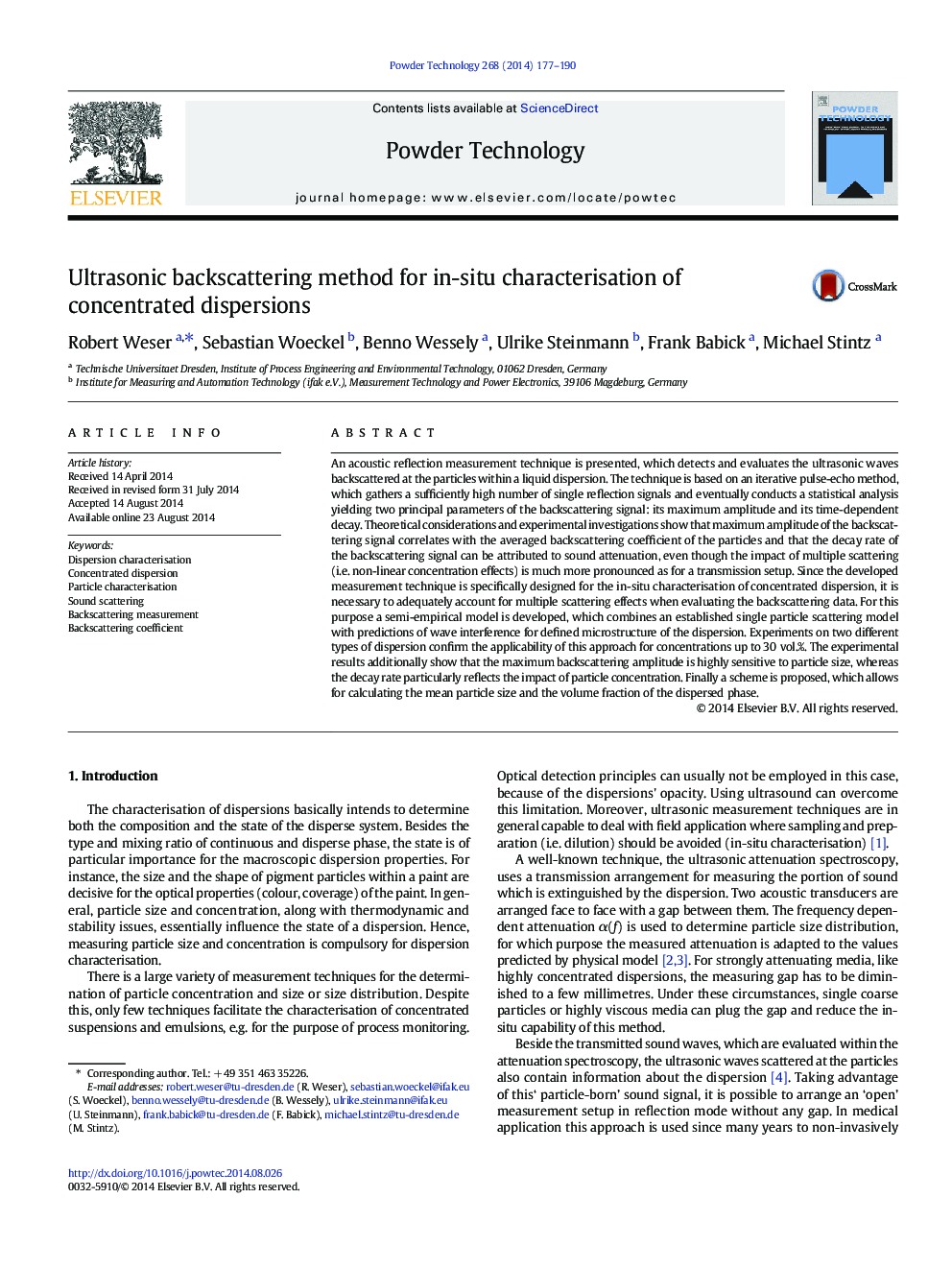| کد مقاله | کد نشریه | سال انتشار | مقاله انگلیسی | نسخه تمام متن |
|---|---|---|---|---|
| 235948 | 465654 | 2014 | 14 صفحه PDF | دانلود رایگان |
• Ultrasonic backscattering is highly sensitive to particle size and concentration.
• Measured intensity is proportional to the calculated backscattering coefficient.
• An empirical approach is used to cover consequences of multiple scattering.
• The open acoustic reflection arrangement facilitates in-situ application.
An acoustic reflection measurement technique is presented, which detects and evaluates the ultrasonic waves backscattered at the particles within a liquid dispersion. The technique is based on an iterative pulse-echo method, which gathers a sufficiently high number of single reflection signals and eventually conducts a statistical analysis yielding two principal parameters of the backscattering signal: its maximum amplitude and its time-dependent decay. Theoretical considerations and experimental investigations show that maximum amplitude of the backscattering signal correlates with the averaged backscattering coefficient of the particles and that the decay rate of the backscattering signal can be attributed to sound attenuation, even though the impact of multiple scattering (i.e. non-linear concentration effects) is much more pronounced as for a transmission setup. Since the developed measurement technique is specifically designed for the in-situ characterisation of concentrated dispersion, it is necessary to adequately account for multiple scattering effects when evaluating the backscattering data. For this purpose a semi-empirical model is developed, which combines an established single particle scattering model with predictions of wave interference for defined microstructure of the dispersion. Experiments on two different types of dispersion confirm the applicability of this approach for concentrations up to 30 vol.%. The experimental results additionally show that the maximum backscattering amplitude is highly sensitive to particle size, whereas the decay rate particularly reflects the impact of particle concentration. Finally a scheme is proposed, which allows for calculating the mean particle size and the volume fraction of the dispersed phase.
Figure optionsDownload as PowerPoint slide
Journal: Powder Technology - Volume 268, December 2014, Pages 177–190
